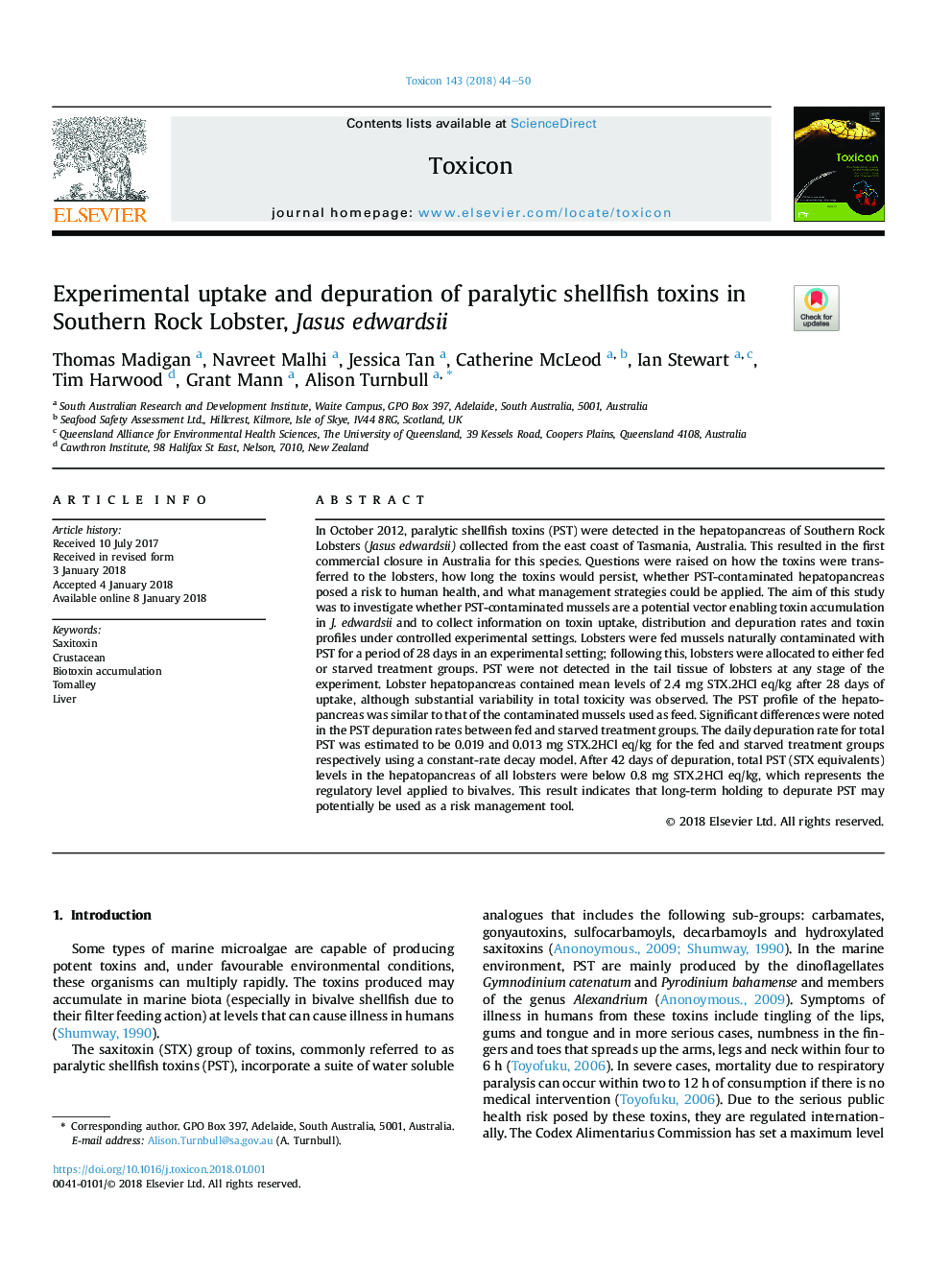| کد مقاله | کد نشریه | سال انتشار | مقاله انگلیسی | نسخه تمام متن |
|---|---|---|---|---|
| 8394721 | 1544093 | 2018 | 7 صفحه PDF | دانلود رایگان |
عنوان انگلیسی مقاله ISI
Experimental uptake and depuration of paralytic shellfish toxins in Southern Rock Lobster, Jasus edwardsii
دانلود مقاله + سفارش ترجمه
دانلود مقاله ISI انگلیسی
رایگان برای ایرانیان
موضوعات مرتبط
علوم زیستی و بیوفناوری
بیوشیمی، ژنتیک و زیست شناسی مولکولی
بیوشیمی، ژنتیک و زیست شناسی مولکولی (عمومی)
پیش نمایش صفحه اول مقاله

چکیده انگلیسی
In October 2012, paralytic shellfish toxins (PST) were detected in the hepatopancreas of Southern Rock Lobsters (Jasus edwardsii) collected from the east coast of Tasmania, Australia. This resulted in the first commercial closure in Australia for this species. Questions were raised on how the toxins were transferred to the lobsters, how long the toxins would persist, whether PST-contaminated hepatopancreas posed a risk to human health, and what management strategies could be applied. The aim of this study was to investigate whether PST-contaminated mussels are a potential vector enabling toxin accumulation in J. edwardsii and to collect information on toxin uptake, distribution and depuration rates and toxin profiles under controlled experimental settings. Lobsters were fed mussels naturally contaminated with PST for a period of 28 days in an experimental setting; following this, lobsters were allocated to either fed or starved treatment groups. PST were not detected in the tail tissue of lobsters at any stage of the experiment. Lobster hepatopancreas contained mean levels of 2.4 mg STX.2HCl eq/kg after 28 days of uptake, although substantial variability in total toxicity was observed. The PST profile of the hepatopancreas was similar to that of the contaminated mussels used as feed. Significant differences were noted in the PST depuration rates between fed and starved treatment groups. The daily depuration rate for total PST was estimated to be 0.019 and 0.013 mg STX.2HCl eq/kg for the fed and starved treatment groups respectively using a constant-rate decay model. After 42 days of depuration, total PST (STX equivalents) levels in the hepatopancreas of all lobsters were below 0.8 mg STX.2HCl eq/kg, which represents the regulatory level applied to bivalves. This result indicates that long-term holding to depurate PST may potentially be used as a risk management tool.
ناشر
Database: Elsevier - ScienceDirect (ساینس دایرکت)
Journal: Toxicon - Volume 143, 1 March 2018, Pages 44-50
Journal: Toxicon - Volume 143, 1 March 2018, Pages 44-50
نویسندگان
Thomas Madigan, Navreet Malhi, Jessica Tan, Catherine McLeod, Ian Stewart, Tim Harwood, Grant Mann, Alison Turnbull,